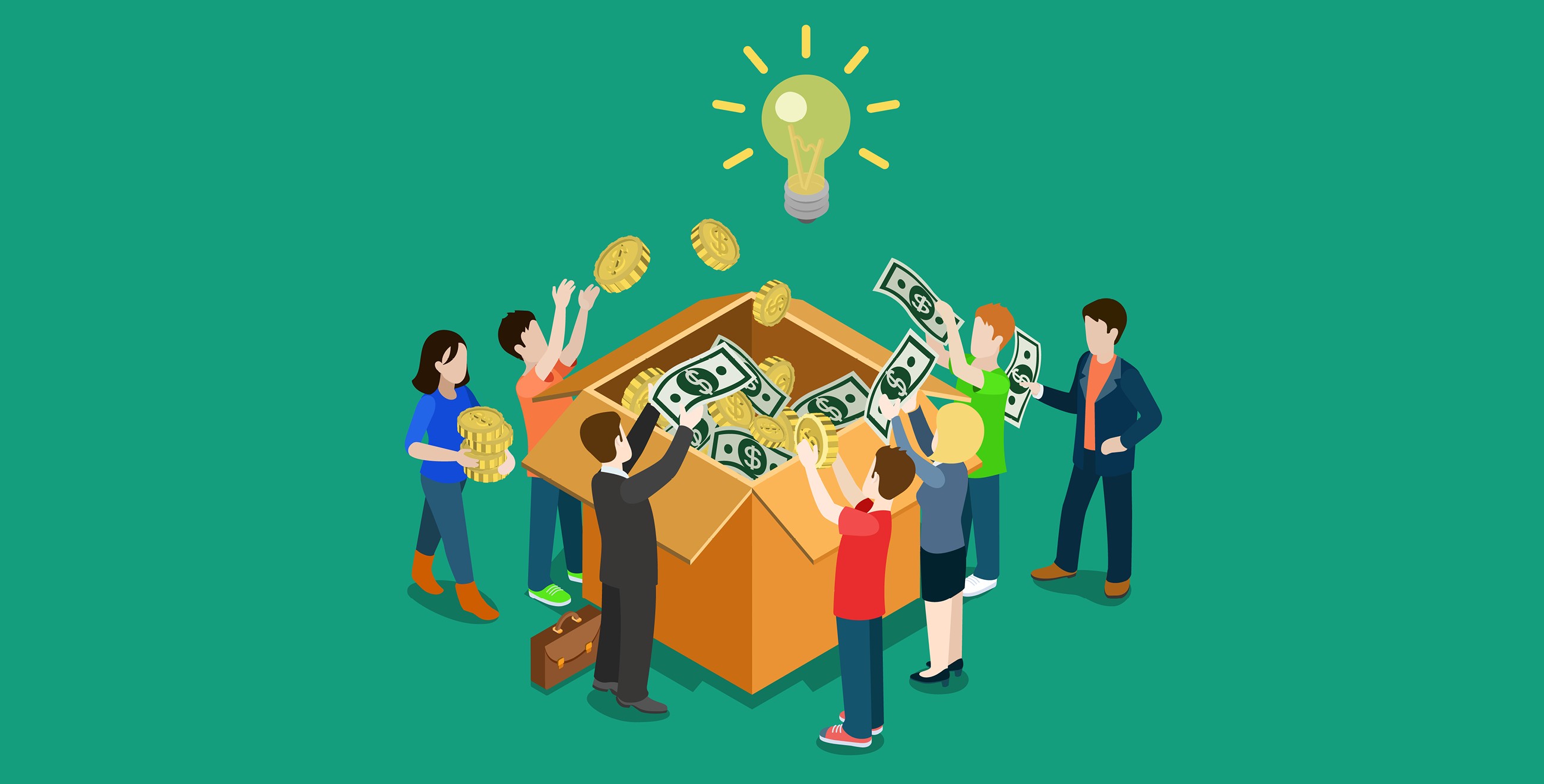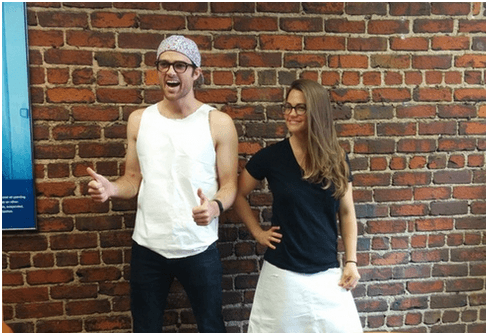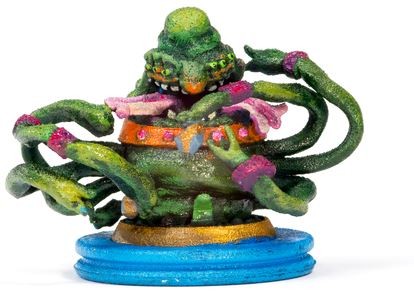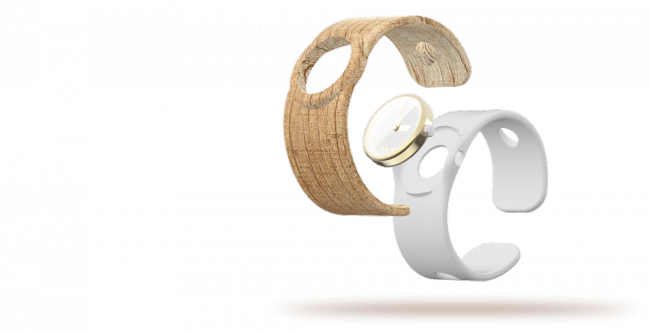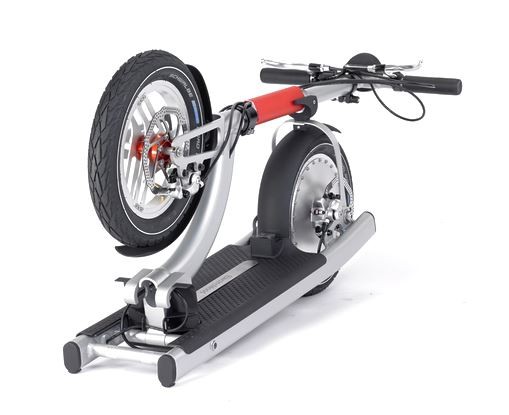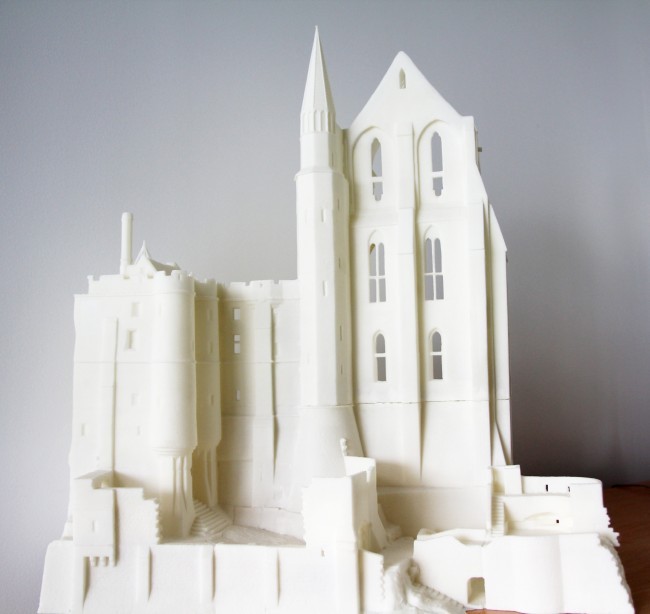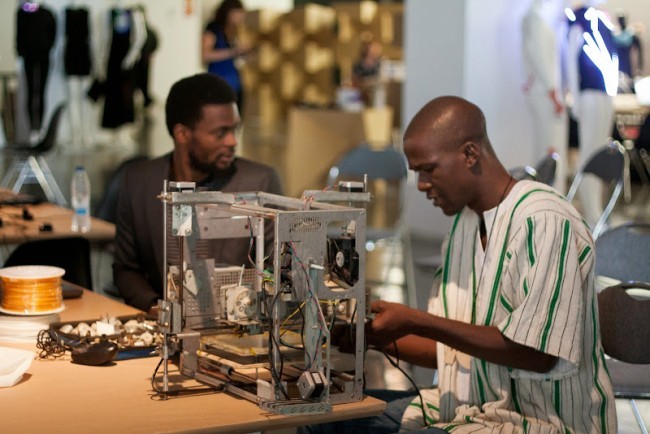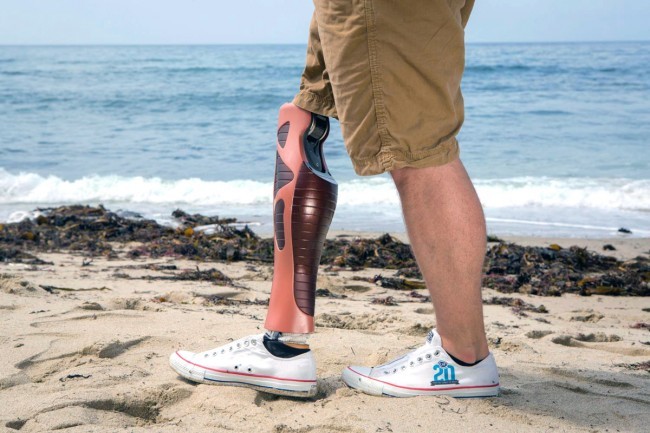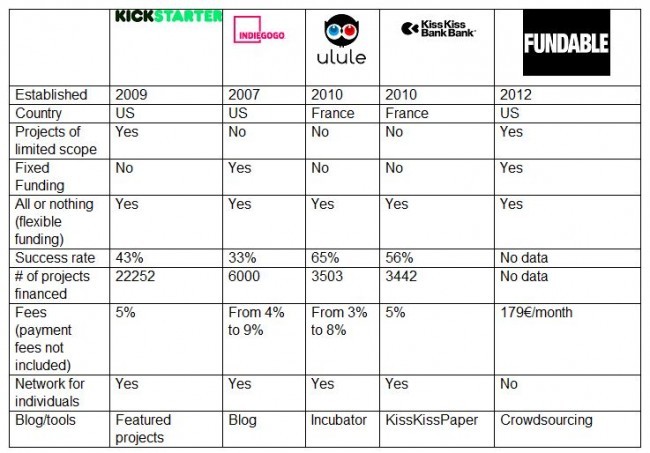Guide to the best crowdfunding platforms for 3D printing
Posted By Claire Chabaud on Jul 7, 2015 | 1 comment
3D printing and crowdfunding were two major, groundbreaking innovations for entrepreneurial freedom. They stimulate creativity, envision new concepts of entrepreneurship and make it easier to achieve results. They allow people to realize their dreams in ways that have been impossible up till now. In 2015, the total amount of funds raised via crowdfunding will reach $34.4 billion—what’s holding you back from getting started?
As always, with the aim of helping you get your project off the ground and seeing it to completion, this guide will help you choose the crowdfunding platform best suited to your product.
Why crowdfunding?
Crowdfunding is a peer-to-peer money lending system that embodies one of the principles of a collaborative economy: a good idea should not be defined by the amount of capital that you are able to invest in it, but by the number of people who are willing to support you.
But why choose crowdfunding over more traditional methods of fundraising? Why trust strangers over your bank?
1. It affords you complete control over your project: You are free of the constraints imposed by a loan or shareholders. The amount raised by your campaign can be directed towards prefunding your first production.
2. Free publicity: If your campaign is successful, it will be the best advertisement you could hope for, it will spread across the different social networks and can even go viral and ensure good visibility for your product launch.
3. Verify your idea and your potential market: Your first investors are also your first customers! They’re not investing in hopes of receiving financial compensation but rather for your product; their participation will tell you firsthand whether there is any demand for your product.
4. Take pre-orders for your product: When your project involves an expensive-to-develop hardware component, crowdfunding enables you to presell your product before the first unit is manufactured.
5. Increase your credibility: An idea supported by thousands of people gains a lot of credibility. In conjunction with your 3D printed prototype, it won’t take much else to convince people of your idea.
The different crowdfunding platforms
-
Kickstarter
Kickstarter is the American giant of crowdfunding platforms, having raised over $529 million in support of more than 22,252 projects in 2014. Finally available to French project developers as of May 27th, it’s a safe bet that these figures are just the beginning of something much bigger.
Who is it for?
Kickstarter is primarily focused on creative projects that aim to produce works or objects. The platform cannot be used to raise funds for charity or for investment. Among the most important categories, we find that technology projects are responsible for a quarter of the funds collected. The site favors qualitative rather than quantitative projects and abides by the principle of “all or nothing”: only if your funding goal is reached do you have access to the funds, otherwise you don’t receive a penny.
Pros:
- Emphasis on quality over quantity
- Generates a buzz for featured projects with their weekly staff pick
- Has a better reputation regarding the quality of its products
Cons:
- Selection process applied to projects
- Limited to artistic and creative projects
- Amount funded is set in stone by the “all or nothing” rule
Applicable fees: 5% if you reach your funding goal + payment processing fees
Success rate: 43% or 50,236 projects have succeeded of 118,508 that have been proposed since its creation.
Our favorite projects
- Projects that fully employ 3D printing : Electroloom
Electroloom is one of the most advanced textile 3D printers both from a technical point of view and based on its output. The project, which launched in May 2015 on Kickstarter, has raised $82,344 with 437 contributors. The contributor rewards were mostly printed pieces. For this campaign, crowdfunding allowed them the opportunity to publicize their project across various networks and get consumers interested in the possibilities offered by this new technology.
- Projects that partially employ 3D printing: Chaosmos
Chaosmos is a strategy-based card game that uses miniature alien figurines. This game puts you in the role of an alien on a desperate quest to find and protect the most important object in the history of Biocosm: The Ovoid . This unusual project achieved great success during its crowdfunding campaign, with over 1,667 contributors who invested $136,361 in support of both the creativity of its story as well as its design. The success of its design is owing to the complex 3D printed alien figures, which Scultpeo’s online tools helped make.
-
Indiegogo
Indiegogo is the crowdfunding platform made famous by a project that aimed to help pay off Greece’s debt. This project encapsulates the spirit of this platform, which democratizes and diversifies the nature of the projects that are proposed. It aims to support all that is important to its users. With more than 6,000 projects funded this year, it is the second largest crowdfunding platform.
Who is it for?
Indiegogo is open to all projects, since there is no selection process, which makes it very diverse. One of its goals is to allow “everyone to pursue their dream.” Moreover, it is the only crowdfunding platform that lets you keep the money you’ve raised even if your goal is not reached.
Pros:
- No selection process
- Diversity of project categories
- The ability to keep the money you’ve raised even if your funding goal is not reached
Cons:
- Does not highlight featured projects
- In the case of fixed funding projects, fees still apply even if your funding goal is not reached
- Emphasizes quantity over quality
Success rate: 33%
Applicable fees:
Choose between two options:
- Fixed Funding (the funds collected are paid to you even if the goal is not reached): If the goal is reached: 4%, if the goal is not reached: 9% (on the amount raised even if the goal was not reached) + payment processing fees
- Flexible funding: If the goal is reached: 4%, if the goal is not reached: 0% (all backers are reimbursed and you do not receive any funds) + payment processing fees
Our favorite projects
- Projects that fully employ 3D printing: Tenvas
Tenvas is 3D printed, customizable watch supported by 232 people for a total of $34,116. This watch brings a little bit of spice to your daily life with interchangeable wristbands that you can design yourself using your own photos or patterns found on their website. It’s a project that could only happen thanks to the extensive customization afforded by 3D printing.
- Projects that partially employ 3D printing: ElectricMood
Electricmood is an eco-friendly electric scooter that achieved huge success on Indiegogo, having been funded at 253% of its original goal. This project spent four years producing 3D printed prototypes in a bid to convince contributors of its viability. Its crowdfunding campaign was essential to achieving its first sales and financing the production of the scooter. Its collaboration with Sculpteo enabled Electricmood to test and improve its product until the final version was ready.
-
Ulule
With 13,078,581€ raised in support of 3503 projects over the course of 2014, this French crowdfunding platform is beginning to carve out its own niche in Europe and the United States.
Who is it for?
If your goal is to become an entrepreneur in the French tech sector, this platform will meet your expectations. Popular with Europeans, it will help your project get more attention than it would on the larger American platforms.
Pros:
- Promotes projects that are “Made in France”
- Full transparency regarding its data
- The “incubator” helps projects get off to the right start
Cons:
- Audience is principally limited to Europe
- “All or nothing” rule
- High selection of the project
Success rate: 65%
Applicable fees:
Goal not reached: No fee
Goal reached:
<100000€ : 5-8%
>100000€ : tiered system ranging from 3-7%
Our favorite projects
- Projects that fully employ 3D printing ” Restauring the wonder“
3D printing can also be used to revive a piece of history. This is the aim of the “Restoring the wonder” project at the Cité de l’Architecture et du Patrimoine in Paris which hopes to restore its model of Mont St Michel to its former glory. Sculpteo 3D-printing service has been used on several occasions in this project: first with a 3D scan in order generate a computer model, then to 3D print it and finally for some of the limited edition rewards offered by the campaign to certain donors. Here, the use of crowdfunding had an added dimension due to the nature of the project: the invested funds were tax-free. Going this route helped raised awareness of the project and the general activity of the Cité de l’Architecture with people who were otherwise unaware of it.
- Projects that partially employ 3D printing : W.Afate
Wherein 3D printing becomes socially conscious. This is a slightly crazy project from a Togolese entrepreneur, who wants to recycle the Western e-waste that is amassing in his country and putting the health of inhabitants at risk when it’s burned, notably by increasing their risk of cancer. But what does this have to do with 3D printing? It just so happens that amongst this e-waste are all the necessary elements for building a 3D printer. Having achieved 123% of his initial funding goal, W.Afate hopes to bring value to and recycle e-waste, making the technology affordable to everyone and fighting back against pollution.
This French crowdfunding platform supported 3442 projects with over 12,733484€ in funds raised in 2014. Similar in concept to Ulule, this platform is among the best in its class in Europe.
Who is it for?
If your project is in the French tech sector or related to the European market this platform presents a great opportunity to help you get started. Furthermore, its “KissKiss Paper” guides that are available on its blog will help you get your project started in a way that’s tailored to its needs.
Pros:
- The KissKiss Paper service
- Readable and inspiring blog
- Promotes projects that are “Made in France”
Cons:
- Only 1/3 of projects are accepted
- Applies the “All or nothing” rule
- Limited audience outside of Europe
Success rate: 56% of 6146 projects attempted
Applicable fees: 5% if funding goal is reached
Our favorite project
- Project that fully employ 3D printing : President Obama 3D printed speech
Mr. Gilles Azzaro created a 3D printed sculpture very surprising and innovative inspired by a speech given by President Barack Obama about the new industrial revolution enabled by the emergence of 3D printing. In the hopes of seeing his vision through to the end, he hoped to transport the sculpture to the United States to present it to the President. The crowdfunding campaign was used to pay his travel expenses and to help him communicate the nature of his work.
-
Fundable
Like Kickstarter, Fundable is the go-to platform for crowdfunding and crowdsourcing for B2B start-ups and SMEs. It has already collected $189 million in two years. It was created following the initiative of the JOBS ACT in 2012, which allows non-accredited investors to take shares in companies.
Who is it for?
For people who are already entrepreneurs and who wish to raise funds exceeding €100,000 or want to get in touch with potential capital providers. You can offer your contributors (other companies) two methods of pledging their money, either for a reward (the reward-based system) or for shares in your company (usually for amounts in excess of $50,000). They can also offer help, volunteer their services or expertise to assist the start-up in its debut (this is called crowdsourcing).
Success rate: No data
Applicable fees: 179€/month + payment processing fees
Pros:
- Crowdsourcing support
- Possibility for equity-based campaigns
- Networking with professionals
Cons:
- Project selection is very strict and selective
- Reserved for B2B
- Monthly fees
Our favorite projects
- Project that fully employ 3D printing : Unyq
The advances made by 3D printing in the surgical field are finally hitting the market. The start-up Unyq has received $1.6 million to market its affordable, customizable 3D printed prosthetics, in a bid to make prosthetics more aesthetically pleasing and helping to make day-to-day life easier for handicapped individuals. Given the amount funded and the nature of the project, Fundable is the ideal platform to support this project.
Finally, let’s have a comparative chart to have a quick overview of each platform distinctive features:
So are you convinced ? Here is our last take away to launch your campaign !
Now that you’re familiar with the main options afforded by the different crowdfunding platforms, you can finally prepare your campaign! To that end, here are some tips on running a successful campaign:
- Improve your credibility:
To this end, always use clear and precise terms when presenting your project, whether it be through a high quality marketing video with a confident tone or when you’re networking to get yourself noticed by influential people in your field. Also, you should know that if you don’t feel at ease with networking, there are specialized agencies out there that will help you with this aspect of your crowdfunding campaign. All the same, it helps to keep a level head about things: the “all or nothing” rule means that you should set realistic goals for yourself lest you lose all of the funds you’ve raised.
- Make yourself appealing:
Remember to put yourself in the shoes of your contributors and make sure to offer relevant and appropriate rewards. To that end, 3D printing can help you to offer personalized and original objects along the same themes as your project. As demonstrated by the “Restoring the wonder” project, in addition to serving as the engine of your project, 3D printing can also serve as a reward! Improving your attractiveness also takes mettle; your campaign always needs to be on its feet, highly motivated and shared widely across various networks so that it gets maximum visibility.
- Don’t underestimate the importance of prototyping:
Even the greatest of ideas won’t be able to convince people to invest their money without a prototype of some sort, an image, something tangible. Only a decade ago this step remained tricky and expensive as it involved casting molds used in plastic injection. Today, thanks to the development of 3D printing, our tools and the advice of our team, you can create a prototype that will convince potential investors to commit to your project. Don’t hesitate to send an email to our customer service team for further information at [email protected]


 Connect with Google
Connect with Google Connect with Facebook
Connect with Facebook